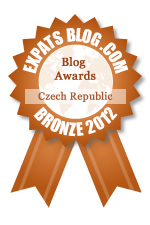
Ihlara Valley © Ricky Yates
After an interesting week here in Prague with the events marking the twentieth anniversary of the Velvet Revolution, I shall return to writing about our trip last month to Asia and back.
The final place we visited in Cappadocia was the Ihlara Valley. This lies about 40km south-west of Derinkuyu and was somewhere I had not visited during my 1975 trip. It is located near Mount Hasan and Mount Melendiz, two of the now extinct volcanoes whose past eruptions have left Cappadocia covered with volcanic lava and ash. The Ihlara Valley or Gorge has been formed by the Melendiz River cutting down through this soft rock to depth of around 100metres over a distance of some 14km.
There are a limited number of access points to the valley. The one we used was about 4km from the village of Ihlara, adjacent to a cliff top restaurant overlooking the valley. Here we ate a late lunch following our morning exertions exploring the underground city at Derinkuyu. From the side of the restaurant there is a series of more than 300 steps that are part of the route that leads down to the valley floor. Walking down, I was very conscious that at the end of the visit, I would have to walk back up from whence I’d come!

Church carved into the cliffside of the Ihlara Valley © Ricky Yates
Within the Ihlara Valley, as in the much more famous Göreme Valley, there are a series of ancient Churches carved into the soft rock of the cliff sides. Like the Göreme Valley Churches, those in the Ihlara Valley are also decorated with frescoes and paintings. Unfortunately, this ancient artwork has suffered much more than in Göreme, from both the natural elements of rain and damp, as well as mindless vandalism. Only recently has the area been made secure with an entry fee being charged and the valley closed at night.
Unfortunately, there are not staff supervising each of the Churches to prevent idiots carving their names, or deal with visitors ignoring notices about not using flash when taking photographs, to avoid any further damage to the paintings. The legible carved names on both the Church walls and the helpful signposts to the different Churches were almost without exception, Turkish names. I was left to wonder if those self-same people would dare do the same thing to the decoration on the wall of a mosque. I think I know the answer to my question!
We only had a little over two hours to explore the valley before the light began to fade. Sunlight disappears far earlier at the valley floor because of the surrounding high cliffs. It would have been wonderful to walk the length of the valley and visit far more Churches than the few we were able to visit before returning up those 300+ steps!



A few years more and the beautiful frescos in the churches will be lost for ever! Why do they charge an entrance fee if they don’t use the money to protect their assets? SY
.-= hospitalera@oes tsetnoc´s last blog ..Do you want to help me? =-.
Very poignant. I am not sure I could bear to go there now (although I always wanted to).
.-= Minnie´s last blog ..Tricks of confidence =-.